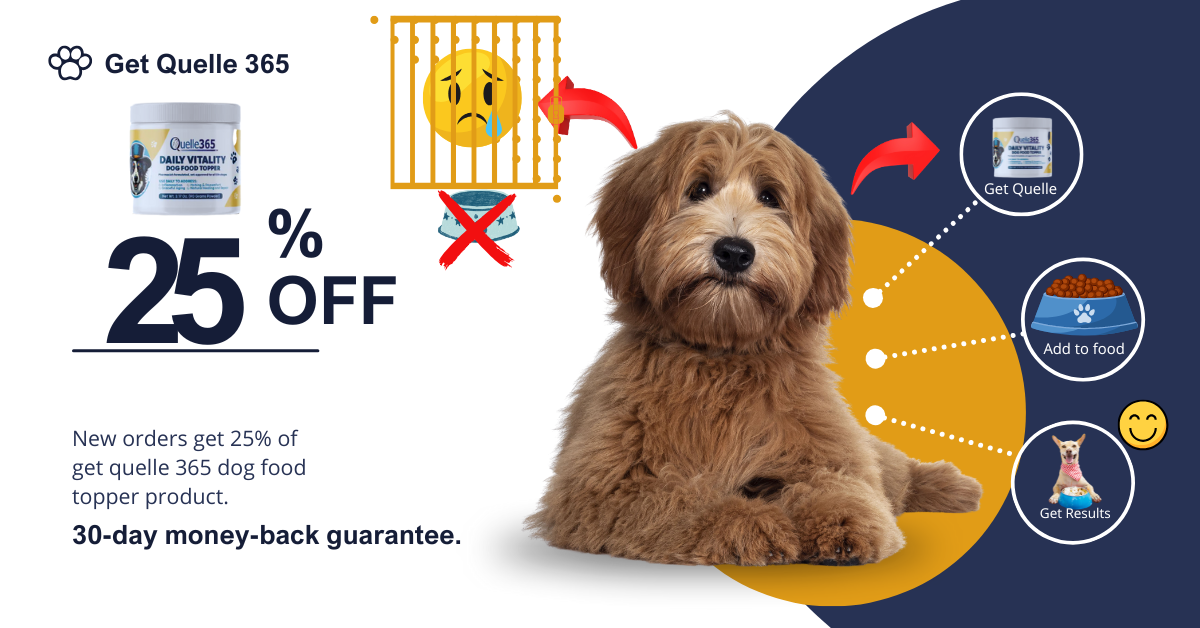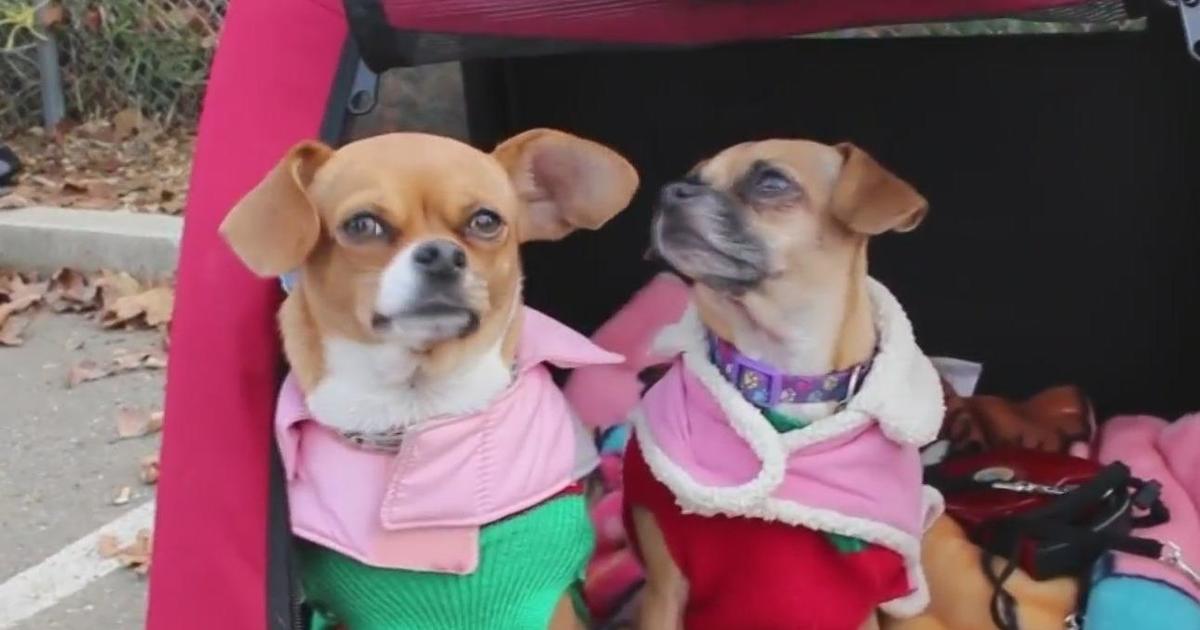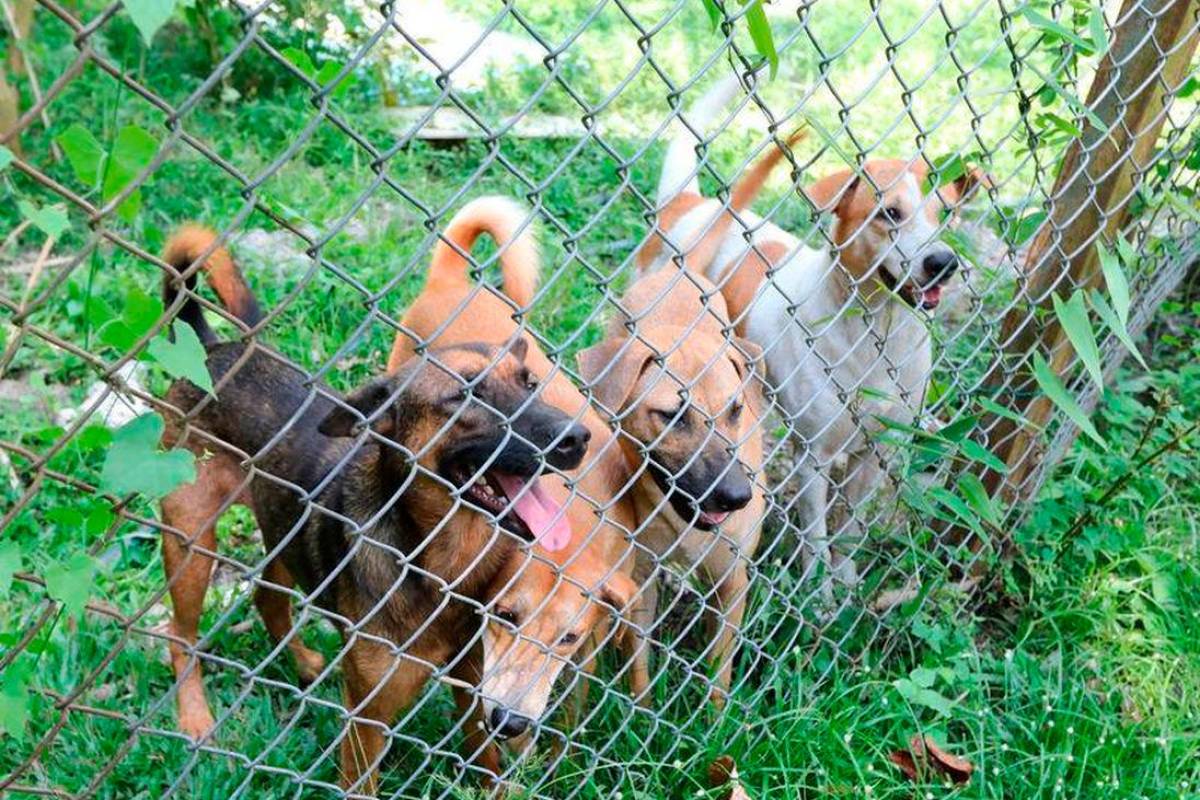Last week, I wrote about the importance of consent when it comes to interacting with dogs we don’t know.
To carry on with that theme, many pet owners are now accessorizing their dog companions with color-coded collars, harnesses and bandanas to help guide strangers in how to safely approach (or not approach) their dog.
Most progressive animal shelters with foster programs will outfit their adoptable dogs with collars that help strangers understand the best way to interact.
For example, Pasadena Humane has a wonderful “Foster Field Trip” program where volunteers can pick up a shelter dog and take them on an outing for a few hours.
Some volunteers will take a dog to the park or maybe on a hike. But they can also just hang out at a cafe, on the couch, or take a walk in the neighborhood. No matter the outing, it’s a much needed break from the stress of being in the shelter.
Studies have shown that even brief periods of time outside of the shelter can reduce cortisol levels (the stress hormone) for days or weeks after.
Whether it’s an adoptable shelter dog out for a foster field trip or one of your neighbors out for a stroll with their pup, it’s important to know what colored collars represent so that if you have an up-close interaction, you’ll know the best way to behave.
Red means “Caution! I need my space!”
When you see a dog wearing a red collar, it’s best to keep your distance. Not because that dog necessarily has anger management issues or wants to tear your leg off if you approach. It simply means that dog may take time to warm up to strangers, so invading their space may lead to a fight or flight reaction.
My dog Madeline fell into the red collar category. She was a low to the ground bundle of nerves who, with the exception of me, didn’t really care for people or other dogs.
So when strangers approached while out on a walk, it was a gamble whether she’d cower and hide or strike like an angry serpent at your ankles.
Since neither of those scenarios were particularly conducive to a peaceful walk, a red collar would have come in really handy with her to avoid those interactions all together.
Orange means “I’m great with people, but not so much with other dogs”
We see this type of dog in shelters quite a lot. With people, these types of dogs are lovely, gentle and enigmatic. But when another dog is nearby, things sort of fall apart. If your dog is reactive to other dogs, you should consider an orange collar to signal others that a puppy “play date” is not a good idea.
Orange collared dogs aren’t necessarily aggressive or vicious with other dogs. Rather, their reactions to other dogs in the first meeting may not be well controlled or could be unpredictable.
Some dogs get so excited to see other dogs that they come on a little too strong, making the other dog react in kind — and before you know it, you’re tangled in leashes or breaking up a fight. It’s not cute, so it’s best to just avoid the interaction all together.
Green means “I like meeting new friends”
Green collars represent a dog that is likely the social butterfly at any party. They’re gorgeous, popular and they love nothing more than to be adored by their many, many fans. These are the Taylor Swift of dogs. If they could fill an arena with adoring fans who just want to watch them do tricks and search for treats, they would — and they would be very expensive tickets.
Just because green collared dogs are the life of any party, that doesn’t mean you should ignore proper etiquette when seeking an interaction with them.
They are celebrities after all, and while they may not mind having their photo taken, when they aren’t on stage performing for thousands, they just want a normal life. Be respectful and get consent from them before you approach.
Blue means “I’m in training or a service dog”
When you see a dog wearing a blue collar or harness, this often means they are either in training to be a service dog or are actively employed as one. Consider this the “student driver” bumper sticker for dogs.
Whether the dog is in training or not, it’s always best to ask the human companion if it’s acceptable to approach.
These dogs have a job to do and they take it pretty seriously — so unplanned interactions with strangers can set them back from their training. So unless the human invites the interaction, you should probably just admire these working professionals from afar.
Purple means “Please do not feed me”
It’s pretty safe to say that no dog would ever knowingly wear a collar that would keep them from accepting treats. But their human companion may accessorize them in this color to signal that treats are not a great idea for any number of reasons.
Perhaps they are trying to slim down for a photo shoot, but most of the time it’s because there is some medical reason why they should not be fed table food or treats. So no matter how much they beg (and they will beg), do not feed these dogs without explicit permission from their human handler.
White means “I’m deaf and/or blind”
My late dog Oliver was a white collar dog. For at least half his life, he was almost completely deaf and blind. Most people didn’t know that unless I told them because he had no trouble getting where he wanted to go.
When you see a dog wearing a white collar, you should take some extra care in moving slowly and deliberately around them to avoid unintentionally startling or scaring them.
Again, consent is particularly important with deaf/blind dogs. Talk to their handler, and read their body language to make sure they will welcome an interaction with you.
Yellow collar means “I’m adoptable!”
Dogs wearing yellow are often foster dogs that are actively looking for a permanent home.
When you see these dogs, you should absolutely approach their handler to ask permission to interact with them because they may end up becoming your new best friend!
As a child, Jack Hagerman founded and operated his own make-shift animal rescue — taking in stray cats, injured birds, and the occasional bunny. As an adult, he co-founded a critically endangered livestock conservancy on his farm in the Midwest, where he cared for and rehabilitated more than 400 animals in 17 different critically endangered livestock species. He formerly worked with Pasadena Humane and the Santa Fe Animal Shelter and Humane Society. When he isn’t working with animals, he’s writing about them — hoping to create a better world for our animal friends, one witty tangent at a time.









